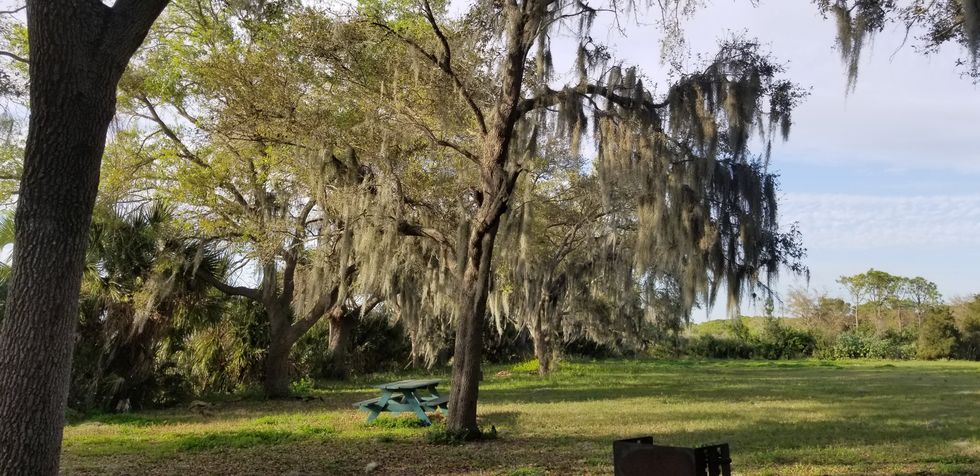Spending a few hours at the park to do my homework has become routine. We made our place on a picnic bench at the edge of a large lake surrounded by various large deciduous trees draped in Spanish moss and a few large palms. I was busy writing and reading when I saw a big, crow-sized black bird with a bright red crest on its head perched on a nearby tree.
I knew right away it was a woodpecker but more than twice the size of any woodpecker I had seen. I had only ever seen it in photographs and field guides but never with my own eyes. It was a pileated woodpecker. In the Midwest these birds aren't as common, I had never seen one, but had seen many downy or hairy woodpeckers in my backyard, and the only ones I had seen in Florida so far were red-bellied woodpeckers. There is something thrilling about seeing such a magnificent bird for the first time.
The pileated woodpecker hopped its body along branches that looked small compared to its size. I approached as subtly as I could, knowing that woodpeckers can be skittish, but it didn't seem to mind me. Then I noticed on a closer palm tree another pileated woodpecker. It flew over to the other woodpecker and sat across from it. They chirped and fluttered their wings at one another before one mounted the other then flew onward to another palm tree and continued tapping.
The tapping wasn't as rapid as smaller woodpeckers, but it was louder, you couldn't miss the distinct tapping sound. I followed the bird from tree to tree, watching it. It would hit the tree so hard that chunks of bark and wood would fall off the branches. Sometimes I was sure it would break right through the branch.
Pileated woodpeckers are known for creating large holes in trees to get at carpenter ants and larvae underneath the bark and within the wood. Often other birds take advantage of these holes. And when making nests for their young, they create large rectangular holes in the tree for their young. I was amazed at how impressive these birds were at breaking through the wood; I had never seen anything like it. Maybe these two birds will make a nest somewhere in the park.
The next three days when I went to the park, I saw the pileated woodpeckers again, obviously making their home in the park. The magnificent red crest on its head would wave as it hopped and hammered. It was visible from 100 feet away. They had beautiful black and white stripes on their cheeks.
I am happy I finally got to watch this bird that I have only heard about or seen a few pictures of, and I won't forget it, North America's largest woodpecker. Keep watching because you never know what new plants, animals, birds, or flowers you might discover that you've never seen before. And watch them as long as you can, you might get to see some of their unique behaviors.












